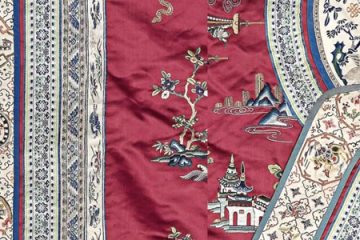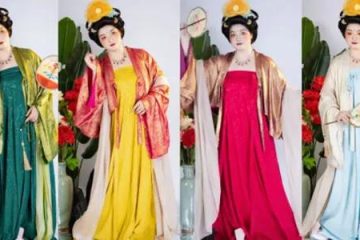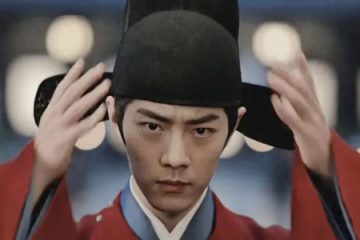Is Li Yitong’s Hair Ribbon a Bit Too Modern?

In the costume drama A Dream Within A Dream, Li Yitong plays Song Yimeng, a modern woman who time-travels to the past. In one scene, she ties her hanfu hair ribbon into a bow, leading viewers to ask: “Isn’t that ribbon style a bit too modern?”
Ⅰ. What is that hair ribbon actually called?
Although her hairstyle reflects her modern personality after time-traveling, bow-style hair ties did exist in ancient times. Back then, they were called “须” (pronounced xū), a term that appears in the Family Rituals of Zhu Xi. It’s described as a narrow strip of cloth, around 8 inches long, used to tie up hair, with the ends left to hang down the back—basically what we’d now call a hair ribbon.
The character for it is quite unique—part “hair” on top, “cloth” on the bottom—and represents a traditional form of tying hair. There’s even a record of it in historical texts!

From Zhu Xi’s Family Rituals:
“For women in mourning, a strip of cloth called a xu (a head ribbon) was used. It was typically made of a narrow piece of linen, about eight inches long, used to tie the hair at the base and left to hang down the back.”
From the Shiwu Jiyuan (《事物纪原》):
“The daughter of Nuwa was said to use a rope made of wool to tie her hair behind her head. Later generations replaced it with silk or colored fabric ribbons, called xu, retaining the same shape and function as the original cord.”
From the Supplement for Yijian Zhi (《夷坚志补》) :
“After moving to the outskirts of Lin’an, she made a living selling hair ribbons (xu) and combs in the marketplace.”
Ⅱ. Bow-Shaped Hair Ribbons in Ancient China
Archaeologists working on Song Dynasty tomb murals in Henan were surprised to find depictions of women wearing ribbon headpieces tied in a way that closely resembles modern bow-shaped headbands. These bows came in various styles and were often tied either on top of the head or just below the hair bun. Despite the similarity to today’s hair accessories, the overall look appeared graceful and refined—less playful, more elegant.

This kind of bow style has also appeared in historical dramas like The Double (with Wu Jinyan) and Are You The One (with Wang Churan). Beyond hairstyles, similar bow-tie elements were often used in ancient accessories such as waist ornaments and palace sashes (宫绦), showing just how versatile and decorative these ribbons could be.

In many traditional Chinese paintings of noblewomen, you can spot similar knotted ribbon decorations. These are generally classified as shòu (绶) — silk ribbons originally used to hang seals and indicate social rank.

At first glance, many of these ribbon designs might look alike, but there are subtle differences. A common type is the “oxalis knot,” typically tied with narrow silk ribbons into three or four loops arranged vertically or in pairs. The knot gets its name because it resembles the clover-like petals of the oxalis flower.
In the Song Dynasty, noblewomen often wore skirts made of lightweight materials like silk gauze and satin. As they walked—or even with a light breeze—the flowing fabric and tied decorations would sway gently, adding elegance and movement to their look.

Summary
It’s clear that ancient Chinese fashion had already embraced the use of bow-style accessories—not just on clothing, but also in hair styling. Whether you see it as an early version of the modern headband or hair tie, the bow added a charming touch to otherwise simple hairstyles. And even today, this timeless detail still shows up in fashion trends. Safe to say— hanfu were way ahead of their time~
Feel free to share your thoughts in the comments 😊



0 Comments